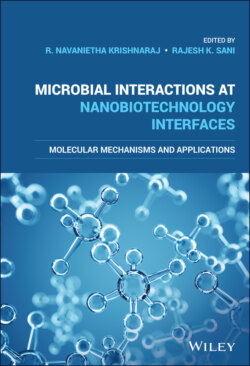Читать книгу Microbial Interactions at Nanobiotechnology Interfaces - Группа авторов - Страница 37
1.6.1 Overcoming the Existing Antibiotic Resistance Mechanisms
ОглавлениеMost kinds of NMs can defeat a minimum of one among the prevalent resistance mechanisms mentioned in Section 1.5.1. These impacts are the consequences of NMs' bactericidal mode, which is based on their physicochemical properties. Unlike traditional antibiotics, the characteristic sizes of NPs are 1–100 nm, which gives them novel properties like better interactions with cells (Huh & Kwon, 2011). How the NMs interact with the cell barriers and disrupt the bacterial cell membrane is discussed in this section. Since few mutations cannot change bacterial cell membrane, it further reduces the chance of drug resistance.
Not only bacterial membrane but the hindrance of biofilm formation is also an important mechanism as biofilms develop bacterial resistance by providing shelter to microorganisms, thus escaping most of the antibiotics (Peulen & Wilkinson, 2011); also, they are breeding grounds for frequent resistant mutations (Khameneh et al., 2016). NMs play a vital role in the prevention of this biofilm formation and the size of these NMs determines the level of their effectiveness in the destruction of these biofilms.
